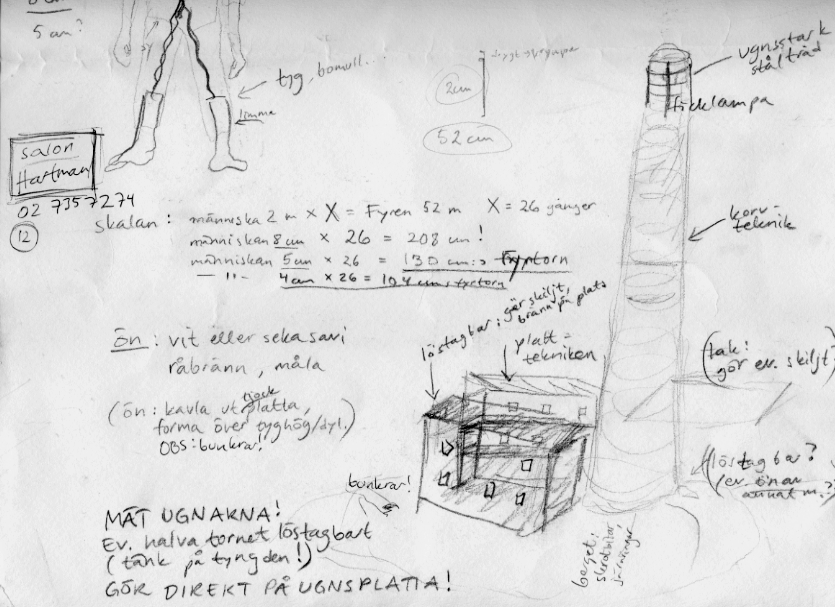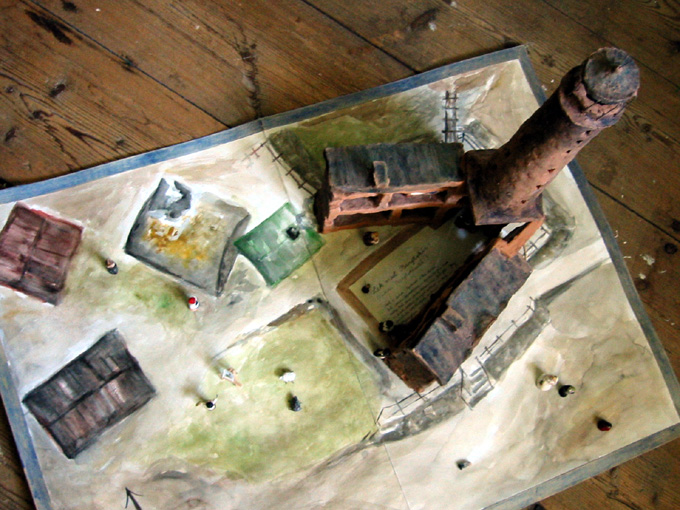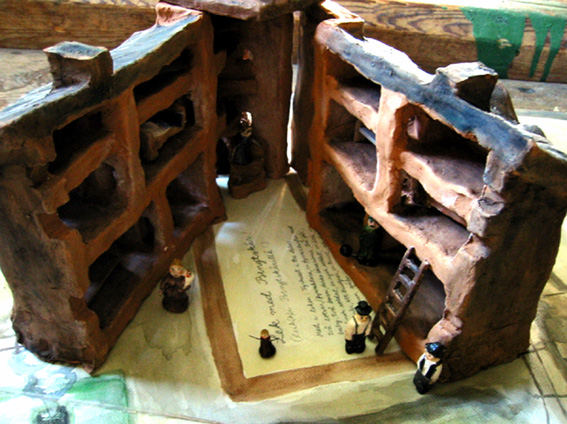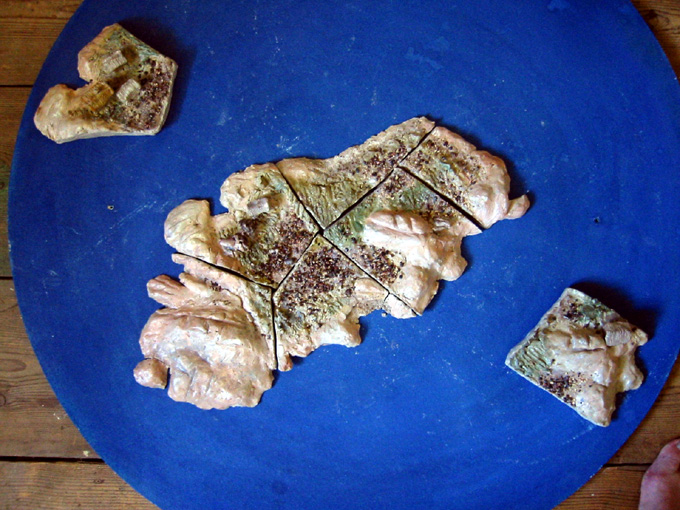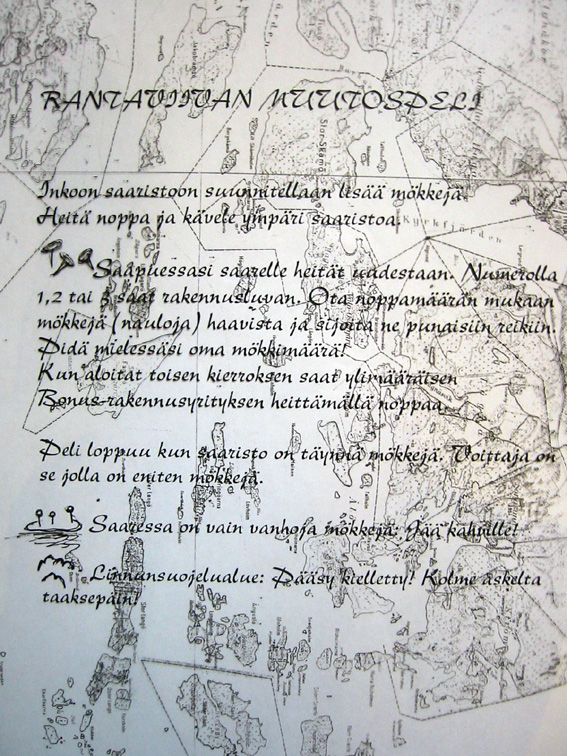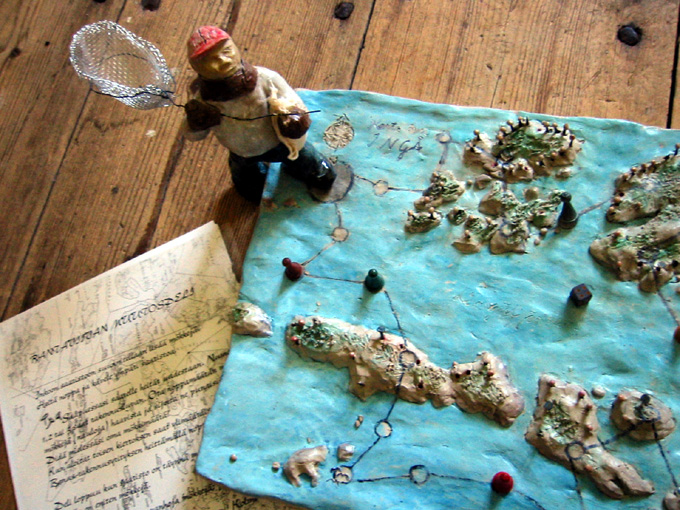Ceramics and Games
Ceramics
In the end of the 1990’s, I studied ceramics, and clay was very important. Meditative, downtoearth, so many possibilities. Surfaces was more important to me than form, I would say.
Ant Pots, 1999. Mixed clay, engobes, oxids. About 90 cm high.
And some other works with ant surface.
Ant Tile
Serial Production, 2000. Cast clay, normal egg size
This was an ironic work since I was so fed up with all the design serial things that were made of thin, white cast clay at the ceramics department I studied. This was not long before I changed department to fine arts… But also, it was a comment on our overproduction of food, of course, especially related to celebrations like Christmas or Eastern, and all the different kinds of for example eggs you can get; with omega3, from happy hens etc.
So much has been written.
About 50 small pots (about 5 cm dia), red clay burnt by different methods, and black ink, displayed on old newspaper sheets.
This was about the first thing I made in art school, as a relief after some for me stressful years working for newspapers.
Games
Already as a child, I made some board games, reshaping famous games to new versions related to my family and our places.
As a ceramics student, I used clay (in a very un-orthodox way, not understood by my department) to make games, mostly to tell a story, comment history or ironically comment society.
Play with Bengtskär, 1999. Raw-burnt clay, watercolour and mixed media. The lighthouse about 50 cm high, the island map sized A2.
This ceramic doll house tells about the fascinating history of Bengtskär. Very different kinds of people, all dolls in the playing game here, have lived or stayed at the lighthouse: builders, pilots (helping ships), teachers, wives, children, soldiers, tourists. How different they must have experienced the place, even though most of them, maybe except the prisoners of war, probably thought of it as theirs, at least for the perishable moment they stayed.
Puzzle of Time 1998 Clay and gravel, displayed on painted chipboard, about 60 cm diameter.
Another art work you could touch, by building different versions of Sommarö, an island in Inkoo archipelago. There were two pieces too much, so that you had to choose which Sommrö – from which time – you built. (This was like an opposite to Coastline’s changegame; this had been a fishing place in earlier times, now too far out in the sea to be popular for building or fixing the old fading away fishing huts.)
Coastline’s changegame, 1998. Raw dried clay, mixed media. About 50x30 cm.
This game originated from a planning map where an unusually big amount of cottages was planned on an already crowded archipelago island.





